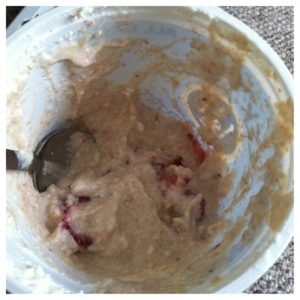What is Intermittent Fasting (IF)? Reblogged from The IF Life
For those that may not be familiar to the term, intermittent fasting is just taking “intermittent” times of fasting (no food) and working them into your lifestyle. This can be either daily or a couple times a week (will get into that more below).
From what I have read/learned from years of independent research on reduced calorie intake (CR) and IF (**studies listed at end), the conclusions are that using short-term calorie restriction/fasting may be effective when it comes to:
Reducing blood glucose and insulin levels (improving the state of the overall glucose metabolism)
Increasing fatty acid oxidation with increased FFAs (through increasing lipolysis hormones GH, glucagon and adrenaline)
Sparing and preserving muscle tissue (lean mass)
Increasing various health factors (lower inflammation, lower blood pressure, reduced oxidative stress, increased protection against neuro-degenerative diseases, and more)
Keeping the metabolism strong/healthy (as eating more meals does not “speed up” your metabolism)
There are also a multitude of lifestyle benefits such as not being a slave to eating all day long (like modern “diets” seem to preach), having more natural daily energy/focus, and even just learning how to enjoy eating once again (with good foods and friends).
Overall it can be a simple eating lifestyle that can not only help you lose weight, but more importantly let you relax and provide relief from obsessing about food or “diets” all day.
How To Start Using IF
Is there only one set way in which to use intermittent fasting?
No, of course not.
I could easily come up with several different IF protocols based on people’s individualistic needs, lifestyle, exercise, goal, macronutrient ratios, and so forth. However I am going to keep it simple and give the 2 most frequent intermittent fasting (IF) options seen.
Longer IF 1-2x a week: This is taking a longer fasting period of say for up to 24 hours and repeating 1-2x a week. Note that 24 hours is not skipping a whole day, as stopping to eat on 6pm Tues and then having your next meal at 6pm Wed is 24 hours. I usually don’t talk about anything longer than 24-32 hours for using IF, as most research is usually based on that fasting window (even if some studies have more frequency with alternate day fasting).
Shorter “Daily” IF: This means that it is done more than a couple times a week (can be daily) with a condensed eating window and less fasting than seen above. I also like to call this “Intermittent Feeding” instead of fasting. For example someone could be eating their calories in a 6-8 hour window daily (and the fasting part happens around it).
With those approaches there are still many variables to include such as calories, activity/exercise, recovery needs, food choices, etc.
In the end it is still about finding a way that does work for you. Picking the approach you think fits around your lifestyle best is going to lead to better results.
Here are some of the pros and cons of each approach for you to consider.
Longer (24 hr) Intermittent Fasting 1-2x a week:
Some of the pros for a longer fast are:
Allows a person to make sure they are getting enough calories on the non-fasting days (as it is not supposed to be a quick “crash diet” or severely calorie restricted overall).
Keeps meals simple on days that you use IF (usually just one small meal later in a day).
Allows you to eat “as normal” on other days (perhaps a better starting point for those that don’t want to change much of the rest of their diet/foods up).
Longer fasts may provide a deeper cellular cleaning (autophagy). Worth noting that this may also be achieved with exercise.
Some of the cons for a longer fast are:
Chance of overeating (binge) after a longer fast, making weight loss benefits not happen (calorie excess overall).
Less of a focus on daily healthier food choices (as I like to say that even a “skinny” person can get heart disease and cancer)
Longer fasts are a bigger stress on the body, and may not be suitable for people who have already a high stress load or metabolic/blood sugar/health* concerns
May not work well with high active lifestyle if calories are still too restricted overall.
More “Daily” Intermittent Fasting (or “Feeding”):
Some of the pros for a shorter daily fast/feeding window are:
Keeps an eating schedule simple and more consistent (day after day).
Helps to break free from the mental concept of “needing” to eat all the time.
Allows your body to adapt it’s hunger (hormones, circadian rhythms) for more consistent feeding times.
Focuses on the importance of nutrients and healthier food choices each day.
Reduces the importance of “snacking” (which is a hidden mental factor leading to many weight issues nowadays).
Intermittent shorter fasting windows may be a less stressful starting approach for those with metabolic/blood sugar/health* concerns.
Helps to focus also on daily lifestyle and stress balance overall to make it successful (which is all part of the equation).
Some of the cons for a shorter daily fast/feeding window are:
Can possibly cause weight loss plateau if calories are still too low for too long (again not meant to be a “crash diet” or severely calorie restricted).
May not be suitable for people with high calorie demands (activity) and still not eating enough overall.
Hey, I figure it’s worth a shot, I am going to try it this month, not eating from 5pm-8am on Friday, Saturday, and Sunday nights. I’ll let you guys know how it goes.







